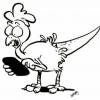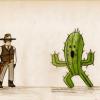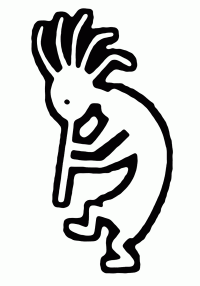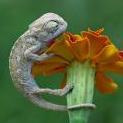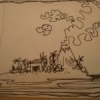Leaderboard
Popular Content
Showing content with the highest reputation on 09/11/12 in all areas
-
2 pointsthose evangelists are really having a hard time in the states....worse than the Jews in Nazi Germany even....
-
2 points
-
2 points
-
1 pointhttp://soundcloud.com/ashleighsymons bit of shameless self promotion let me know what you think..
-
1 pointhttp://news.discovery.com/human/do-intelligent-people-drink-more-alcohol.html i knew that was the reason.
-
1 pointHey peeps! When is the next meet? If it's the 18th i'll unfortunatly still be in the tropics. Did we want to change locations? I'm happy to do one at my place some time but I do live down south in Baldivis.
-
1 pointWell that didn't work out as planned ! I'm keen on pursuing the 'no-pour' agar tek, where the media is prepared and transferred to containers before pressure cooking, to reduce one instance of contamination (considerations are made for not having a flowhood). This is working for me with 1/2 pint jars, but the vacuum seal makes it tough to pry the metal lids off. After trying the little sauce containers, fully sealed, I just inspected then post-autoclaving, and the lids all popped off. I'll try something else this afternoon. Two option I have in my mind are: 1. Leaving the lids ajar, and wrapping the jars in foil before going into the PC, then snapping them on after sterilising. My concern though is that the lids have bowed slighty and are a challenge to get back on now. Furthermore, I may as well pour sterile agar if Im mucking around post-PC'ing. 2. Installing an Air-Port, by using high temp RTV gasket silicone, piercing the lid with a needle, stuffing the needle attachment with polyfill, and covering with foil. This may also promote faster growth, with an air exchange vector. Any suggestions from the experts? These are the containers:
-
1 pointMy dearest of friends, Mister Capricorn Coast, The dashing and valiant wordsmith with the most, Who taketh of praise as much as he give Our Dear Patty Uri, our reason to live. Let us pray that the long established & respected member PD does not take umbrage to my inadvertant initialism theft. Therefore & henceforth, I shall from this moment foreward, my handle shall be simply "Psylo". It worked for Prince (not our dear Charlie, but the diminuitive pocket rocket whom sheds a tear when doves cry). It should be our Ginger compadre that gets the accolades for the current crop of well-versed actively-contributing mycophiles. I merely have the jump on Melange, and hope that my slightly above novice status is not misconstrued as fungal goddess, for I am merely a conduit between the expert knowedge and the newbie seeker of sporulating fruitage. It is my seeker status that has me closer to the source of active learning. Hope youre travelling well, Pat.
-
1 point
-
1 point
-
1 pointYou could always re-graft to a more hardy rootstock after it reaches maturity and starts flowering. Some of the opuntias make a good long term stock, I've been using Opuntia inamoena which is a miniature form that roots readily. ------------------------------------------------------------------------------------------- For my Peres grafts I've been using the clingwrap method where you cover the graft with clingwrap and then secure the clingwrap to the stem of the Peres with a clothes peg. I only wait about 5 days with clingwrap on (which creates a humid zone around the graft) and then put them straight into the open air. I leave them inside in the shade for a few days and Ithen get them outside under shadecloth for about a week and then start moving them to brighter spots over the next few weeks.
-
1 pointWell my vine is responding to all the extra TLC it has been getting this year, it likes the new pergola I built for it, and it is just flowering heaps. Plenty of mulch and horse poo.
-
1 point
-
1 point
-
1 point
-
1 point
-
1 point
-
1 pointEDIT: On a per-user basis, this probably isn't very accurate. The information we require is how frequent cannibalism actually is, under the influence or not. What is most interesting, is that I have not heard of any of the cases mentioned, yet bath salt linked cannibalism is all over the media.
-
1 point
-
1 pointWhen you offer something for free, you should be prepared to accept the reality that some people may not take the courtesy to say thank you, and thats just a reality of life. It does not mean what you did for that person is any less valuable, they simply lack an awareness of the required social ettiquite for recieving such gifts. In time, everyone who sticks around long enough comes to understand the ettiquite and gives back what they can, and so the process continues. We just have to be aware many people are just beginning on the road to their new way of life and what comes across to us as 'bad manners' is simply a valuable lesson they are yet to learn. Turning against them for such ignorance could turn them away, and we dnt want that, we just want them to learn. As for growing plants for profit, i think its perfectly reasonable to want something in return for your efforts, but i draw the line at making your living from other people's addictions :-(
-
1 point
-
1 point"A wink of his eye, and a twist of his head, soon led me to know I had nothing to dread." —Twas' the Night Before Christmas, Clement C. Moore http://www.av1611.or...ubls/santa.html Nearly all Santa researchers agree that some traits of Santa was borrowed from Norse [scandinavian] mythology. Encyclopedia Britannica describes the role of Nordic mythology in the life of Santa: Sinterklaas was adopted by the country's English-speaking majority under the name Santa Claus, and his legend of a kindly old man was united with old Nordic folktales of a magician who punished naughty children and rewarded good children with presents. ("Santa Claus" Encyclopaedia Britannica 99) Some Santa researchers associate Santa with the Norse "god" of Odin or Woden. Crichton describes Odin as riding through the sky on an eight-legged, white horse name Sleipnir. (Santa originally had eight reindeers, Rudolph was nine). Odin lived in Valhalla (the North) and had a long white beard. Odin would fly through the sky during the winter solstice (December 21-25) rewarding the good children and punishing the naughty. (Crichton, Robin. Who is Santa Claus? The Truth Behind a Living Legend. Bath: The Bath Press, 1987, pp. 55-56) Mythologist Helene Adeline Guerber presents a very convincing case tracing Santa to the Norse god Thor in Myths of Northern Lands: Thor was the god of the peasants and the common people. He was represented as an elderly man, jovial and friendly, of heavy build, with a long white beard. His element was the fire, his color red. The rumble and roar of thunder were said to be caused by the rolling of his chariot, for he alone among the gods never rode on horseback but drove in a chariot drawn by two white goats (called Cracker and Gnasher). He was fighting the giants of ice and snow, and thus became the Yule-god. He was said to live in the "Northland" where he had his palace among icebergs. By our pagan forefathers he was considered as the cheerful and friendly god, never harming the humans but rather helping and protecting them. The fireplace in every home was especially sacred to him, and he was said to come down through the chimney into his element, the fire. (Guerber, H.A. Myths of Northern Lands. New York: American Book Company, 1895, p. 61) The unusual and common characteristics of Santa and Thor are too close to ignore. An elderly man, jovial and friendly and of heavy build. With a long white beard. His element was the fire and his color red. Drove a chariot drawn by two white goats, named called Cracker and Gnasher. He was the Yule-god. (Yule is Christmas time). He lived in the Northland (North Pole). He was considered the cheerful and friendly god. He was benevolent to humans. The fireplace was especially sacred to him. He came down through the chimney into his element, the fire. Even today in Sweden, Thor represents Santa Claus. The book, The Story of the Christmas Symbols, records: Swedish children wait eagerly for Jultomten, a gnome whose sleigh is drawn by the Julbocker, the goats of the thunder god Thor. With his red suit and cap, and a bulging sack on his back, he looks much like the American Santa Claus. (Barth, Edna. Holly, Reindeer, and Colored Lights, The Story of the Christmas Symbols. New York: Clarion Books, 1971, p. 49) Thor was probably history’s most celebrated and worshipped pagan god. His widespread influence is particularly obvious in the fifth day of the week, which is named after him – Thursday (a.k.a. Thor’s Day). It is ironic that Thor’s symbol was a hammer. A hammer is also the symbolic tool of the carpenter – Santa Claus. It is also worth mentioning that Thor’s helpers were elves and like Santa’s elves, Thor’s elves were skilled craftsman. It was the elves who created Thor’s magic hammer. In the Handbook of Christian Feasts and Customs, author Francis Weiser traces the origin of Santa to Thor: "Behind the name Santa Claus actually stands the figure of the pagan Germanic god Thor." (Weiser, Francis X. Handbook of Christian Feasts and Customs. New York: Harcourt, Brace & World, Inc., 1952, p. 113) After listing some the common attributes of Thor and Santa, Weiser concludes: Here, [Thor] then, is the true origin of our "Santa Claus." . . . With the Christian saint whose name he still bears, however, this Santa Claus has really nothing to do. (Weiser, Francis X. Handbook of Christian Feasts and Customs. New York: Harcourt, Brace & World, Inc., 1952, p. 114) Another interesting trait of Thor is recorded by H.R. Ellis Davidson in Scandinavian Mythology, "It was Thor who in the last days of heathenism was regarded as the chief antagonist of Christ." (Davidson, H.R. Ellis. Scandinavian Mythology. New York: Peter Bedrick Books, 1982, p. 133) In case you are not aware, an "antagonist" is an enemy, adversary or replacement. The bizarre and mutual attributes of Thor and Santa are no accident. While the pagan brush strokes of Norse mythology has painted some of the traits of Santa Claus, there exists another brush stroke coloring Santa that bids our inspection. There is a little-known piece in the life of Santa that time and tradition has silently erased. Few people are aware that for most of his life, St. Nicholas (Sinter Klaas, Christkind, et. al.) had an unusual helper or companion. This mysterious sidekick had many names or aliases. He was known as Knecht Rupprecht; Pelznickle; Ru-Klas;Swarthy; Dark One; Dark Helper; Black Peter; Hans Trapp; Krampus; Grampus; Zwarte Piets; Furry Nicholas; Rough Nicholas; Schimmelreiter; Klapperbock; Julebuk; et. al. The startling fact is, Santa Claus is not the Bishop St. Nicholas – but his Dark Helper! In certain German children’s games, the Saint Nicholas figure itself is the Dark Helper, a devil who wants to punish children, but is stopped from doing so by Christ. (Renterghem, Tony van. When Santa Was a Shaman. St. Paul: Llewellyn Publications, 1995, p. 105) Black Pete, the ‘grandfather’ of our modern Santa Claus. Known in Holland as Zwarte Piet, this eighteenth-century German version, is—like his ancient shamanic ancestor—still horned, fur-clad, scary, and less than kind to children. Although portrayed as the slave helper of Saint Nicholas, the two are, in many villages, blended into one character. This figure often has the name Nikolass or Klaus, but has the swarthy appearance of the Dark Helper. (Renterghem, Tony van. When Santa Was a Shaman. St. Paul: Llewellyn Publications, 1995, p. 98) Artist Thomas Nast is rightfully credited for conceiving the image of our modern day Santa, but Nast’s model for Santa was not the Bishop St. Nicholas but his dark companion, the evil Pelznickle. The Christmas demon Knecht Rupprecht first appeared in a play in 1668 and was condemned by the Roman Catholic as being a devil in 1680. . . To the Pennsylvania Dutch, he is known as Belsnickel. Other names for the same character are Pelznickle, "Furry Nicholas," and Ru-Klas, "Rough Nicholas." From these names, it is easy to see that he is looked upon as not merely a companion to St. Nicholas, but almost another version of him. (Del Re, Gerard and Patricia. The Christmas Almanack. New York: Random House, 2004, pp. 93,94) In Thomas Nast: His Period and His Pictures, biographer Albert Bigelow Paine, documents that Nast’s Santa was Pelznickle. But on Christmas Eve, to Protestant and Catholic alike, came the German Santa Claus, Pelze-Nicol, leading a child dressed as the Christkind, and distributing toys and cakes, or switches, according as the parents made report. It was this Pelze-Nicol – a fat, fur-clad, bearded old fellow, at whose hands he doubtless received many benefits – that the boy in later years was to present to us as his conception of the true Santa Claus – a pictorial type which shall lone endure. (Paine, Albert Bigelow. Thomas Nast: His Period and His Pictures. New York: Chelsea House, 1980, p. 6)
-
1 point
-
1 pointThis is what the cintia looked like when I first acquired it, a main head & 3 offsets....the offset on the bottom left was weak & spindly. None of my cacti was collected from the wild. Klongs aren't considered in the wild are they? As they matured, more offsets occurred, & you can see new heads popping out. Currently there are 17 heads of varying sizes. Here is a non-variegated cintia. It has tiny yellow flowers when in bloom. I'll probably offer the fresh Jourd seeds in the plant & seed exchange forum. And here's a sneak preview of even more eye candy p0rn, a variegated T. grandiflorus
-
1 point





